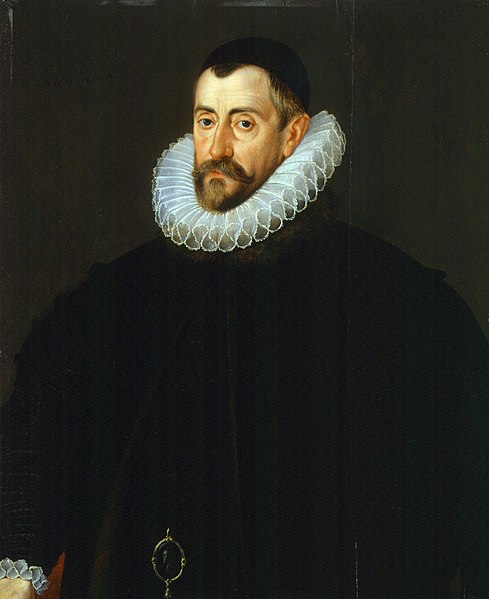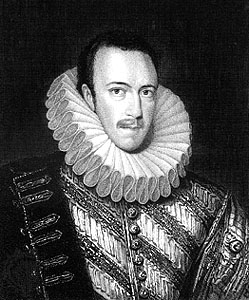 |
| Mary as prisoner |
The
commission investigating the allegations against Mary was adjourned and in
February 1569 Mary was moved to Tutbury, under the control of the Earl of
Shrewsbury. Elizabeth was bombarded with letters from her cousin, protesting
the treatment she received. In April Elizabeth offered to return Mary to the
care of her brother and after many months of procrastination Moray refused.
Meanwhile
support for a marriage between Mary and Norfolk was gaining supporters; one of
the most influential was that supreme opportunist the Earl of Leicester;
‘There could be no better
Remedie to provide for so dangerous a Woman…..considering the present state of
the World.’[i]
The
suggestion of marriage to Norfolk had been suggested to Mary in May and she
leapt at the chance. Leicester informed Elizabeth of the marriage plans in
September. An insecure Elizabeth was incensed and deeply wounded by the plot to
unite the country’s premier noble with her great rival for the throne.
Mary begged
Philip II to intervene, with the promise that when Elizabeth was laid low and
she, Mary, was queen of England, the country would revert to Catholicism. Norfolk
and the Earl of Arundel were also involved with the Spanish Ambassador, who was
under house arrest. The pair used the services of a Florentine money lender
named Roberto Ridolfi[ii], using a safe cipher.
Norfolk was
summonsed to attend on Elizabeth; frightened he feigned illness. Then the ports
were closed and he was ordered to return to court. Not a man of action Norfolk
submitted to the order and by 3rd October he was in the Tower. He
was to remain there for ten months, his enthusiasm for the marriage undimmed by
the setback.
Thomas Percy, Earl of Northumberland
The Catholic
lords of Northumberland and Westmoreland rose in the north; the rebellion was
declared traitorous on 28th November 1569 by the Lord President in
the North, the Earl of Sussex. The rebel lords fled to Scotland and Spanish
support evaporated.
Attainder
Elizabeth,
to her chagrin, was unable to deal with Norfolk on a treason charge as he had
not contravened the Treasons Statute. He was released in August 1570 and he
stayed in his London home at the Charterhouse[iii]. Norfolk had promised
Elizabeth
‘From the Bottome of my
Harte [I] crave of Your Majestie Forgivenes
for that which is past………..with a full Intencion never to deale if that
Cause of Mariage of the Quene of Scottes,
not in any other Cause belonging to her, but as you Majestie shall command me.’[iv]
At New Year
1571 Norfolk sent the Queen the traditional New Year’s gift enclosing a letter.
The Queen decided not to accept the proffered gift. The Earl of Leicester wrote to inform Norfolk
of this refusal, telling him that Elizabeth had said
‘You shall thank him from
me, and tell him that I have received his letter and do keep it, and like the
manner of his writing very well. But I may not take any gift or token from him
till we be better friends.’[v]
Sir Thomas Walsingham
Not very
intelligently Norfolk now made use of Ridolfi again, unaware that he had been
turned by Francis Walsingham, Elizabeth’s spy master. Ridolfi
contacted the Spanish ambassador, greatly exaggerating the number of Englishmen
prepared to risk their lives in an attempt to overthrow their queen. Norfolk
and Mary both authorised the contacts with Spain. Ridolfi’s coded letters to
Mary were intercepted as were hers to Norfolk and the cipher decoded.
The new plot
required
·
Assistance
from the Spanish Governor of the Netherlands, who would send six to ten
thousand men to Harwich or Portsmouth
·
Norfolk
and his sympathisers would take Elizabeth prisoner (or murder her) during her
summer progress
·
This
would be followed by a general uprising against the remnants of the government;
·
Mary
would be freed, marry Norfolk and be made Queen of England. The fact that
Mary’s husband was still alive would no doubt be a problem the Pope would be
only too happy to solve.
Thomas Howard, Duke of Norfolk
Evidence of
Norfolk’s involvement in the plot resulted in his return to the Tower on 7th
September 1571. He was tried before his peers and found guilty on 16th
January 1572. When he was informed of the verdict Norfolk informed his former
colleagues
The Lord’s will be done; God
be judge between me and my false accusers.’[vi]
On 26th January Norfolk was
expelled from the Order of the Garter in a ceremony held at St George’s Chapel,
Windsor. The warrant for Norfolk’s execution was signed on 9th
February by the Queen. On 26th May when parliament met there were calls for Mary’s
execution heard on all sides. Instead Elizabeth threw Norfolk to the wolves.
Bishop Lesley of Ross
In prison
Norfolk was not an easy prisoner and the Governor of the Tower was distracted
by his complaints. Norfolk threatened to denounce his fellow plotters from the
scaffold, especially his own secretary William Barker and Mary’s agent Bishop
Lesley of Ross.
‘The duke is as yet
determined to speak very evil of the Bishop of Ross and Barker, which course
swerveth from that charity and repentance which others of equal degree hath at
such times used.’[vii]
Norfolk was
concerned for his mother, who was up in London at the time and he wanted the
authorities to persuade her to return home. The former Countess of Surrey[viii], having lost her
husband to the executioner was now to lose her eldest son.
Norfolk was executed
on 2nd June 1572, dead at the age of 34. At the time of his
attainder Norfolk was England’s richest man, with an estimated income of £2,800
per annum[ix]. It would be another
fifteen years before his co-conspirator Mary would come to the block.
Death Comes as the End
On 20th
January 1572 Norfolk wrote what he thought was to be a last poignant letter to
his children;
‘Dear children, This is the last
letter that ever I think to write to you, and therefore if you loved me, or
that you seemed grateful to me for the special love that I have ever borne unto
you, then remember and follow these my last lessons.’[x]
In it he
begged his children to stay Protestant, something his eldest son Philip felt
unable to do. Norfolk was executed on 2nd June 1572 and was buried
within the precincts of the Tower
Philip Howard, Earl of Arundel
Philip
Howard too was to die in prison, having been arrested in 1585 while trying to
flee the country. As a Catholic, Philip had tried to take his family to France,
where he would be free to practise his own religion. He died after ten years
imprisonment, probably from dysentery, having failed to recant his beliefs.
Bibliography
Elizabeth
and Mary – Jane Dunn, Harper Perennial 2003
Walsingham –
Alan Haynes, Sutton Publishing 2004
Elizabeth I
– Anne Somerset, Fontana 1992
Rivals in
Power – ed. David Starkey, Macmillan London Ltd 1990
Mary, Queen
of Scots – Alison Weir, BCA 2003
A Tudor
Tragedy – Neville Williams, Barrie and Rockcliff 1964
[i]
Elizabeth and Mary - Dunn
[iii]
At this period known as Howard House
[iv]
Elizabeth and Mary - Dunn
[v]
Rivals in Power - Starkey
[vi]
A Tudor Tragedy - Williams
[vii]
Ibid
[viii]
Now remarried
[ix]
In 2010 £749,000.00
using the retail price index or £8,980,000.00
using average earnings www.measuringworth.com . In comparison the next richest land owner had an income of about
£1,000 per annum
[x]
Rivals in Power - Starkey





No comments:
Post a Comment
Note: only a member of this blog may post a comment.